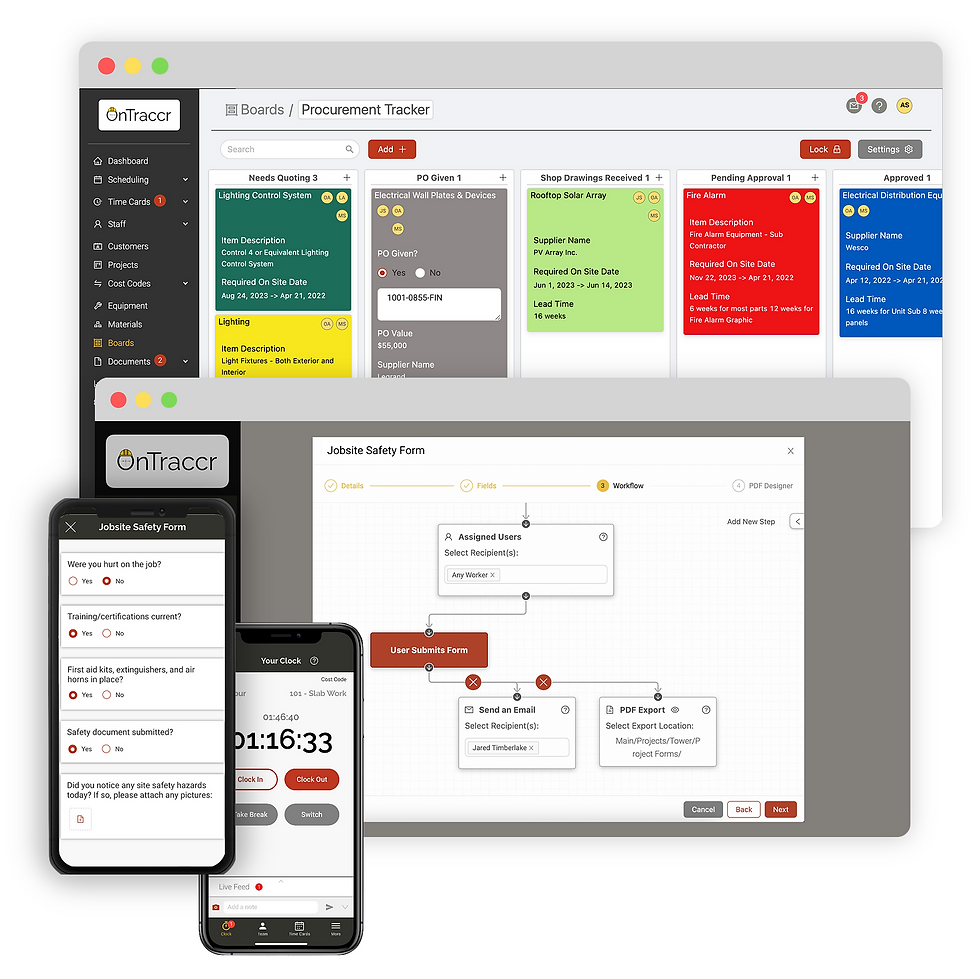While traditional construction management software has been the norm for many years, no-code workflow tools are quickly gaining traction due to their many advantages.
No-code workflow productivity tools and standard construction management software tools are two different categories of software that can help construction companies manage their projects more effectively. While both types of tools aim to increase productivity, reduce costs, and streamline workflows, they each have their unique strengths and limitations.
No-code workflow productivity tools are becoming increasingly popular in the construction industry due to their ease of use and ability to streamline processes.

In this article, we'll explore the key differences between no-code workflow productivity tools and standard construction management software tools, and which one might be a better fit for your company's needs.
Standard Construction Management Software Tools
Standard construction management software tools are designed to manage all aspects of construction projects, from planning to completion. These tools are often complex and require technical knowledge to use effectively. They typically include features such as project management, document management, budgeting and accounting, and scheduling.
One of the biggest issues with traditional construction management software is its complexity. Many of these tools require extensive training and technical expertise to operate, which can be a major obstacle for small or medium-sized businesses that don't have dedicated IT departments.

Additionally, traditional construction management software can be inflexible, limiting the ability of businesses to customize the software to meet their specific needs. This can lead to frustration and inefficiency, as users are forced to adapt their workflows to fit the limitations of the software, rather than the other way around.
No-Code Workflow Productivity Tools
No-code workflow productivity tools are designed to automate repetitive tasks and simplify complex processes without requiring any coding skills. These tools allow users to create custom workflows and automate tasks using visual drag-and-drop interfaces, making it easier for non-technical users to streamline their work processes.
Some common features of no-code workflow productivity tools include:
Visual Workflow Builders
No-code workflow productivity tools allow users to create and manage custom workflows using drag-and-drop visual interfaces. This makes it easy for users to create complex workflows without any coding knowledge.
Automation Capabilities
These tools can automate repetitive tasks such as data entry, email notifications, and report generation. This allows users to focus on more important tasks and improve productivity.
Integration Options
No-code workflow productivity tools often integrate with other tools and services, such as project management software, CRM systems, and accounting tools. This can streamline workflows and improve collaboration between teams.
Key Differences Between No-Code Workflow Productivity Tools and Standard Construction Management Software Tools
The key differences between no-code workflow productivity tools and standard construction management software tools are:
Customization and Flexibility
No-code workflow tools are highly customizable and offer a great deal of flexibility to construction businesses. These tools allow businesses to create workflows that are tailored to their specific needs without requiring any coding knowledge.
This means that businesses can easily modify their workflows as their needs change without relying on external IT support. In contrast, traditional construction management software can be rigid and inflexible, making it difficult for businesses to adapt to changing requirements.
Ease of Use
No-code workflow tools are designed to be user-friendly, even for individuals with little to no technical experience. This makes it easier for construction businesses to onboard new employees and get them up to speed quickly. On the other hand, traditional construction management software can be complex and difficult to use, which can lead to lower adoption rates and decreased productivity.
Reduced Costs
No-code workflow tools are generally less expensive than traditional construction management software, which can be a significant advantage for smaller businesses with limited budgets. These tools typically require fewer resources to set up and maintain, which can result in cost savings over time.

Increased Efficiency
No-code workflow tools are designed to automate many of the repetitive and time-consuming tasks that are inherent in the construction industry. By automating these tasks, businesses can improve their overall efficiency and productivity. In contrast, traditional construction management software may not offer the same level of automation and may require more manual intervention.
Faster Deployment
No-code workflow tools can be deployed quickly, often in a matter of hours or days, compared to traditional construction management software which may require weeks or even months to set up. This means that businesses can start using these tools much faster, which can lead to a quicker return on investment.
The Rise of Construction Workflow Automation
Construction Workflow Automation (CWA) is a new kind of technology that is gaining a lot of momentum across the construction industry because it combines the best of both worlds: no-code workflow design with best-in-breed construction management capabilities.

Pioneered by Ontraccr, CWA gives construction companies the ability to cover all of their essential construction management needs while providing a highly-intuitive layer of custom workflow design.
CWA gives construction teams the ultimate level of flexibility to decide what the software should do for them as a company, per project, per vendor, or even per client. As companies evolve, they can simply update their workflows within the software instead of needing to switch to different tools over time.
Welcome to the new age of construction management software.






